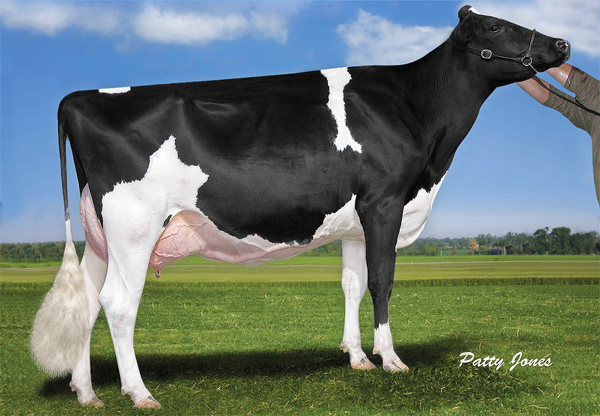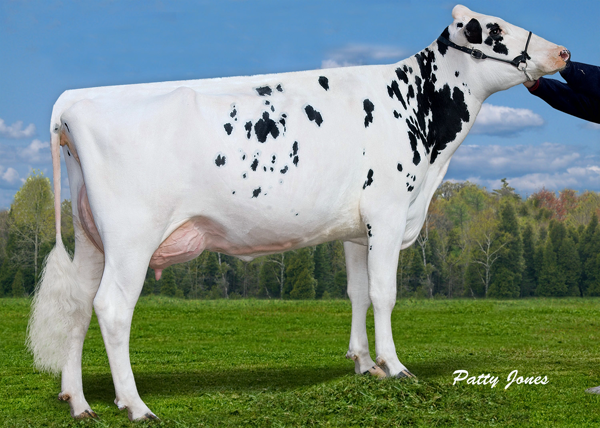Discover key genomic regions and genes linked to oocyte and embryo production in Gir cattle. How do these findings impact breeding strategies? Explore this study now.

Imagine revolutionizing cattle breeding by pinpointing genetic markers that boost oocyte and embryo production. Recent genomic advances promise just that. Our study explores the inheritance patterns of key genomic regions and genes in Gir cattle sire families, using daughter designs to reveal crucial insights.
Focusing on genomic regions linked to viable oocytes (VO), total oocytes (TO), and embryos (EMBR) could transform cattle breeding. Understanding these genetic factors enhances reproductive efficiency and economic value. By examining 15 Gir sire families, each with 26 to 395 daughters, we aimed to identify specific genetic markers contributing to these traits.
“Identifying QTLs through daughter designs may unlock remarkable advancements in cattle breeding.” — Lead Researcher.
This research holds significant practical potential. Pinpointing genomic windows on BTA7—home to genes like EDIL3, HAPLN1, and VCAN—enables breeders to make informed decisions, boosting reproductive performance and economic returns. Our findings could lead to more robust and fertile cattle herds, ushering in a new era of genetically informed breeding practices.
Introduction to Genomic Regions and Key Genes in Gir Cattle
Identifying genomic regions linked to oocyte quality and embryo development is crucial for cattle breeding advancements. Through extensive Genome-Wide Association Studies (GWAS) on 15 Gir sire families, significant regions associated with viable oocytes (VO), total oocytes (TO), and embryos (EMBR) were discovered. These regions, notably concentrated on BTA7, highlight the heritable nature of these traits. In-depth analysis revealed significant genetic variations within these regions.
This genetic mapping is essential for selecting sires with optimal reproductive traits, enabling targeted breeding programs to improve reproductive efficiency. Pinpointing specific regions allows breeders to leverage genetic predispositions for desirable outcomes.
Essential genes like EDIL3, HAPLN1, and VCAN are vital in regulating oocyte maturation and embryo viability, impacting the developmental processes crucial for reproduction. Their involvement in ensuring oocyte and embryo quality underlines their importance in reproductive success.
Discussions on gene expression patterns highlight the significance of these markers. Differential expression of genes such as EDIL3, HAPLN1, and VCAN influences reproductive outcomes and presents potential targets for genetic interventions. Technologies like CRISPR-Cas9 offer promising avenues for enhancing reproductive traits by precisely modifying specific genomic regions. This can improve oocyte quality and embryo development, leading to more efficient breeding strategies.
For further insights into genetic selection and its implications, resources like Genomic Selection: Doubling of the Rate of Genetic Gain in the US Dairy Industry and Leveraging Herd Genotyping & Sexed Semen: A Game-Changer in the Livestock Industry are valuable.
Identifying QTL: Key Findings and Implications
The rigorous GWAS analysis using GBLUP revealed crucial genomic regions associated with reproductive traits in Gir cattle. Among these, BTA7 consistently emerged as a critical chromosomal region affecting VO, TO, and EMBR traits, highlighting its potential influence on reproductive efficiency.
VCAN, XRCC4, TRNAC-ACA, HAPLN1, and EDIL3 stand out among the identified genes. VCAN and EDIL3 on BTA7 seem integral to cellular matrix interactions and endothelial cell function. These genes are likely crucial for enhancing oocyte and embryo yields, essential for genetic advancement, and economic benefits in cattle breeding.
Furthermore, genomic windows found on BTA2, BTA4, BTA5, BTA7, BTA17, BTA21, BTA22, BTA23, and BTA27 for VO, and those on BTA2, BTA4, BTA5, BTA7, BTA17, BTA21, BTA22, BTA26, and BTA27 for TO, underline the complex genetic foundation of these traits. Overlaps among these regions hint at loci with pleiotropic effects, suggesting that targeted selection could improve multiple characteristics simultaneously.
Additionally, the QTLs on BTA4, BTA5, BTA6, BTA7, BTA8, BTA13, BTA16, and BTA17 related to EMBR highlight the intricate genetic interplay in reproductive success. Overlapping and distinct QTLs across various chromosomes point to a nuanced genetic network.
Overall, this study confirms the value of daughter design in QTL mapping, uncovering critical genetic insights into oocyte and embryo production. These findings lay a robust groundwork for future research. They targeted breeding strategies, with BTA7 identified as a primary focus for enhancing reproductive efficiency in Gir cattle.
Implications for Breeding and Genetic Improvement
Genomic information has the potential to enhance breeding strategies in Gir cattle. By identifying key genes like EDIL3, HAPLN1, and VCAN, breeders can improve reproductive traits with precision. Incorporating this data into selection programs allows for targeted breeding, focusing on individuals with favorable alleles. This can boost the number of viable oocytes and embryos, improving production efficiency and profitability.
Moreover, integrating genetic data into selection programs is vital for sustained improvements. Genome-wide markers enable breeders to predict reproductive success early, accelerating genetic gains. This method enhances selection and reduces resources on less productive animals, optimizing herd performance.
Finally, ongoing research is essential. Identifying more genomic regions and genes related to oocyte and embryo production maintains genetic diversity and refines breeding strategies. Incorporating new markers into programs ensures Gir cattle genetic improvement evolves with dairy production challenges. Advanced genomic tools and traditional practices promise robust, high-yielding cattle meeting growing dairy demands.
The Bottom Line
The discovery of genomic regions and essential genes tied to reproductive traits in Gir cattle significantly enhances our grasp of these crucial economic traits. This research highlights QTL across various chromosomes by examining 15 Gir sire families through a daughter design approach, particularly the vital genes EDIL3, HAPLN1, and VCAN on BTA7. These findings offer a genetic blueprint for improving oocyte and embryo production efficiency.
These results call for further investigation to dissect the complexities of the bovine genome. Applying these insights in breeding programs can refine genetic selection strategies, optimize reproductive performance, and enhance the productivity and profitability of Gir cattle herds.
The potential impact on the cattle industry is immense. Livestock producers can expect better herd fertility and efficiency, leading to higher yields and lower costs. Consumers may benefit from more sustainable and ethically managed cattle production systems, producing higher quality and potentially more affordable beef products. This study marks a crucial step in livestock genetic refinement, encouraging stakeholders to leverage these findings for future advancements.
Key Takeaways:
- Identification of genomic regions and candidate genes related to reproductive traits in Gir cattle families has been achieved.
- BTA7 was found to have the genomic windows with the highest QTL concentration, including genes like VCAN, XRCC4, TRNAC-ACA, HAPLN1, and EDIL3.
- A total of 42 genes were associated with embryo production (EMBR), and 42 genes were linked to both viable oocytes (VO) and total oocytes (TO).
- The study utilized a daughter design approach, focusing on 15 Gir sire families to map the inheritance of these key traits.
- Genomic regions for VO were identified on multiple chromosomes, with BTA8 being the most frequent within families.
- For EMBR, significant genomic windows were found on several chromosomes, with BTA7 being the most frequently occurring within families.
- The research indicates a heritable nature of these reproductive traits, emphasizing the importance of targeted breeding strategies for genetic improvement.















